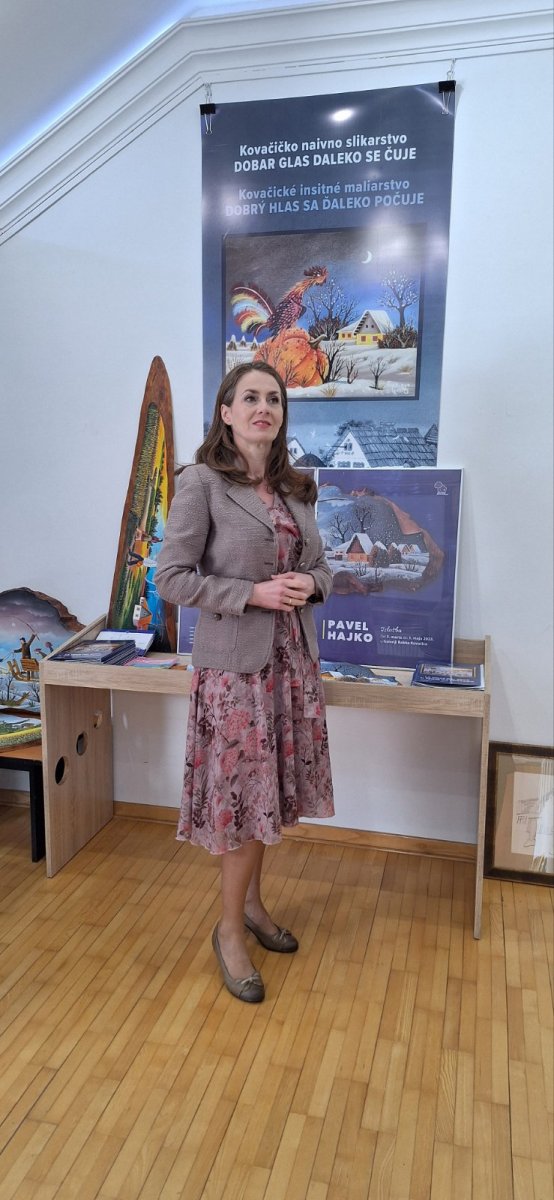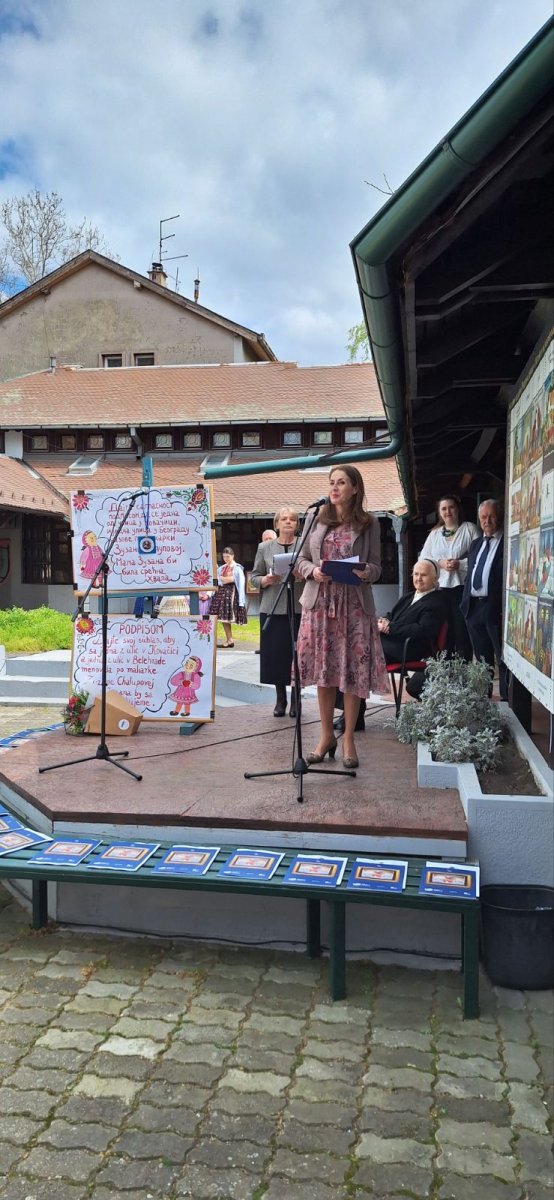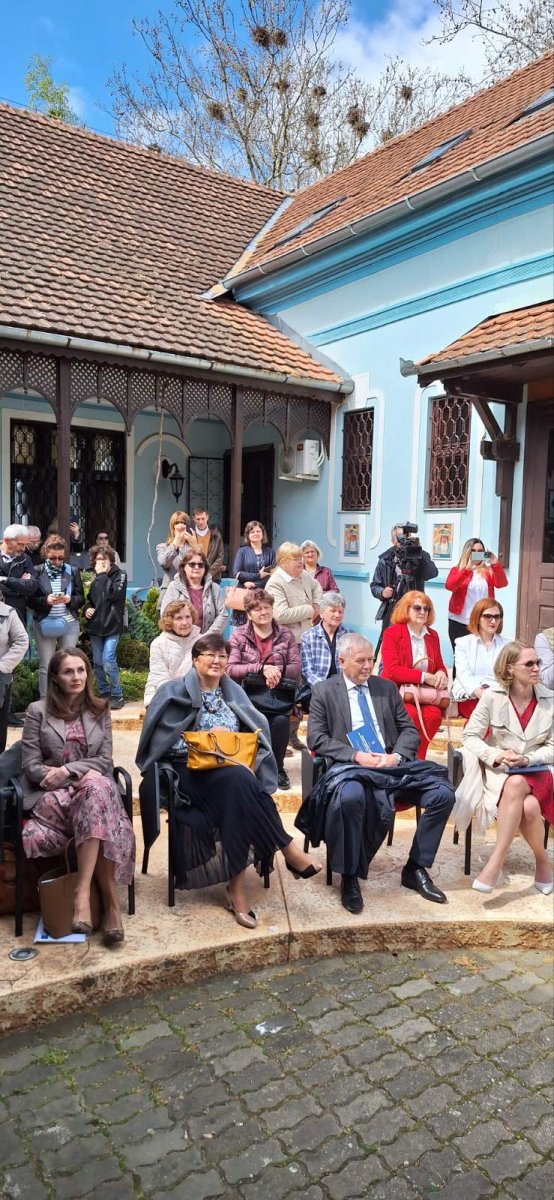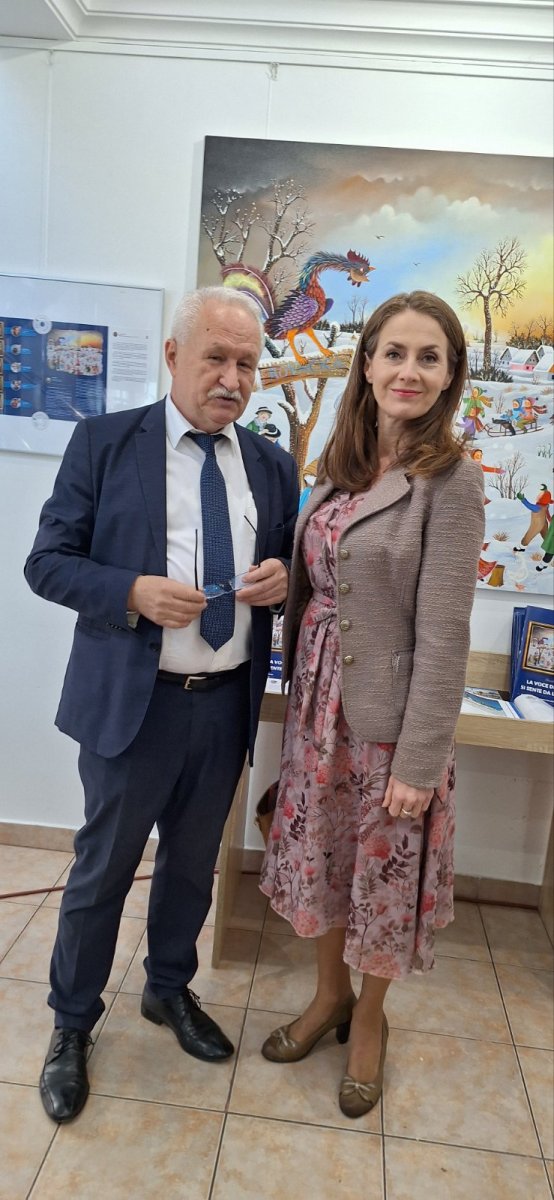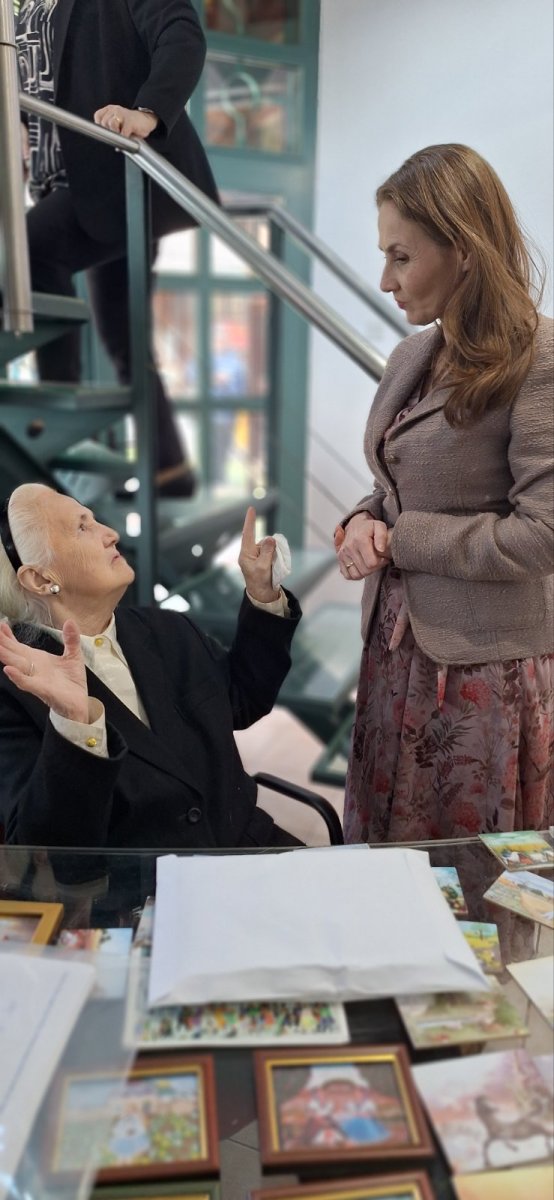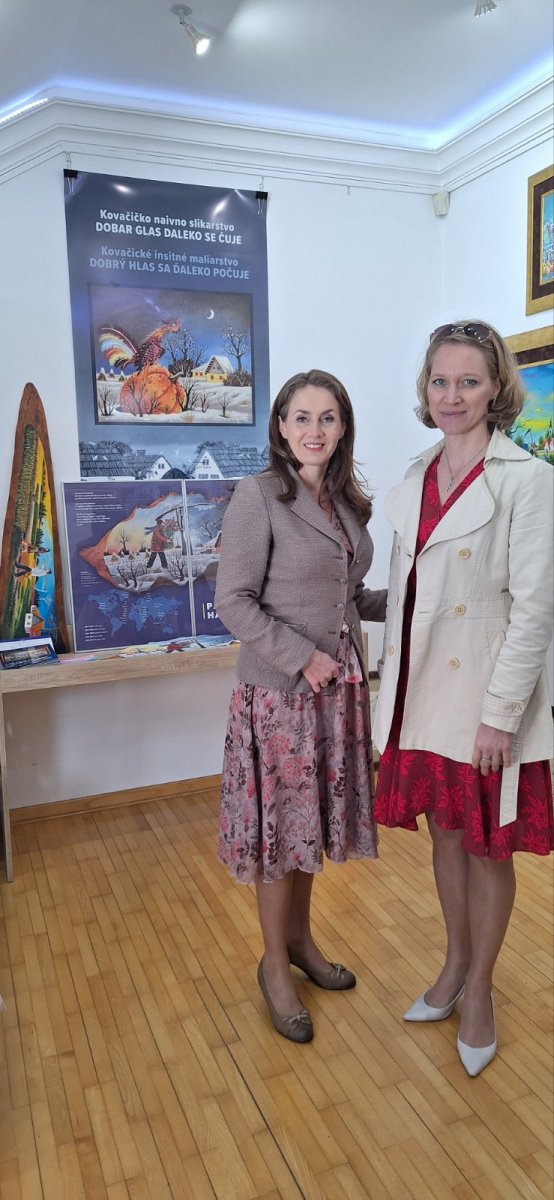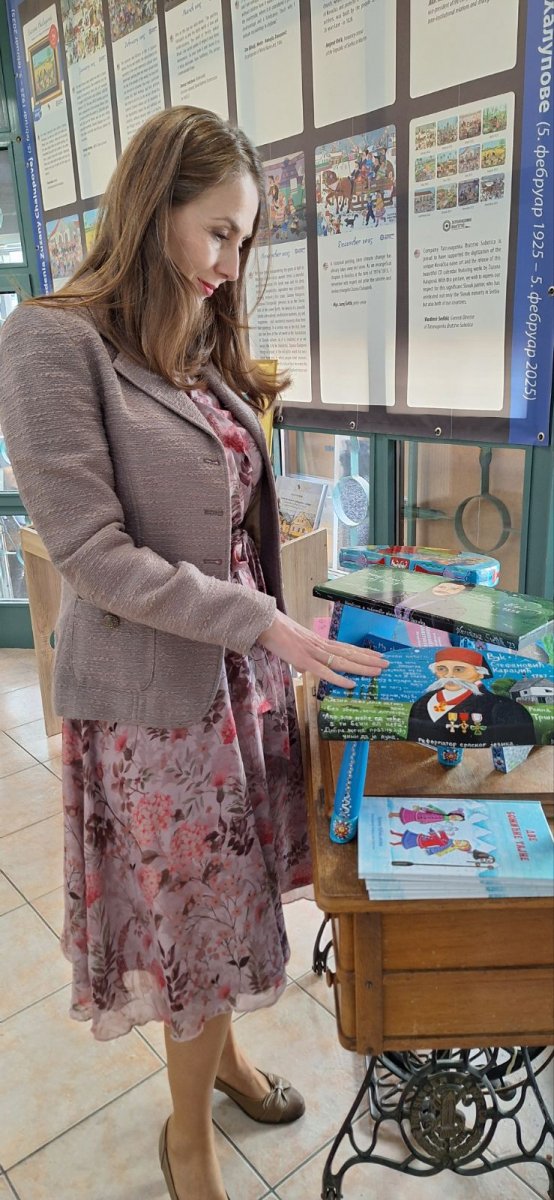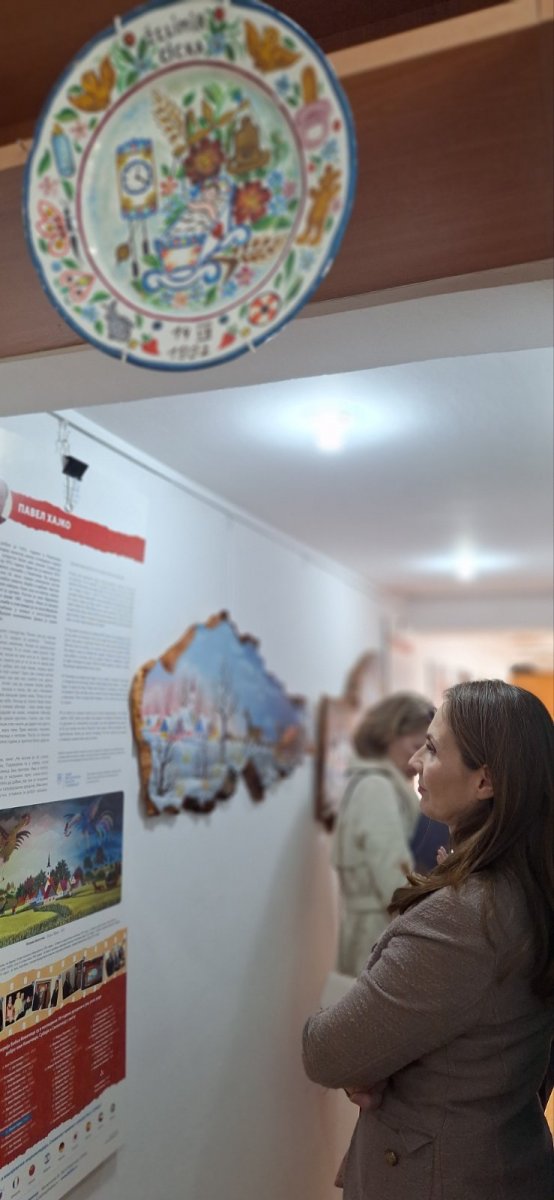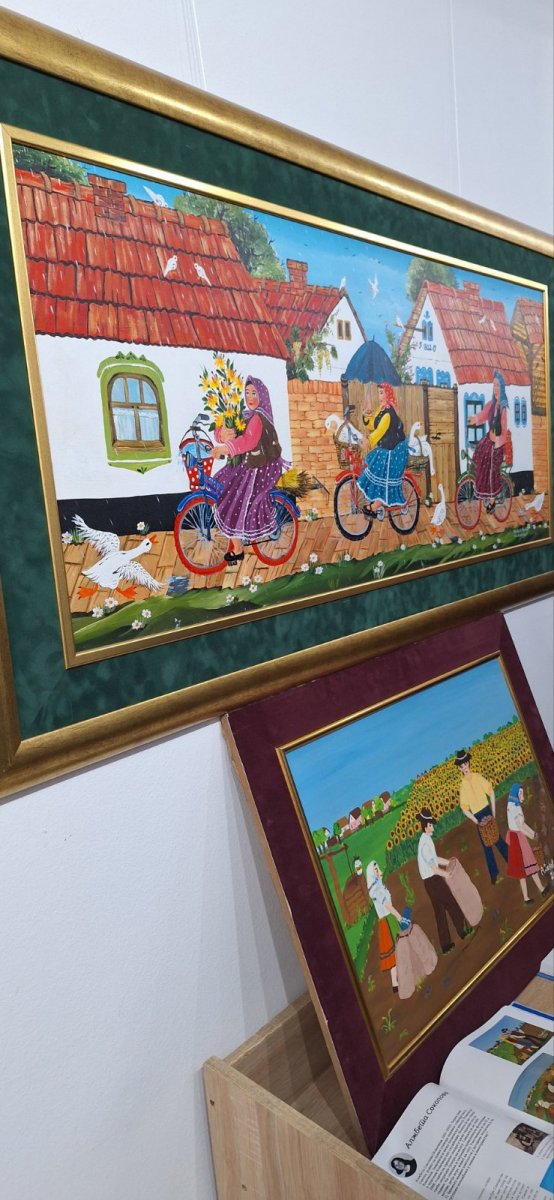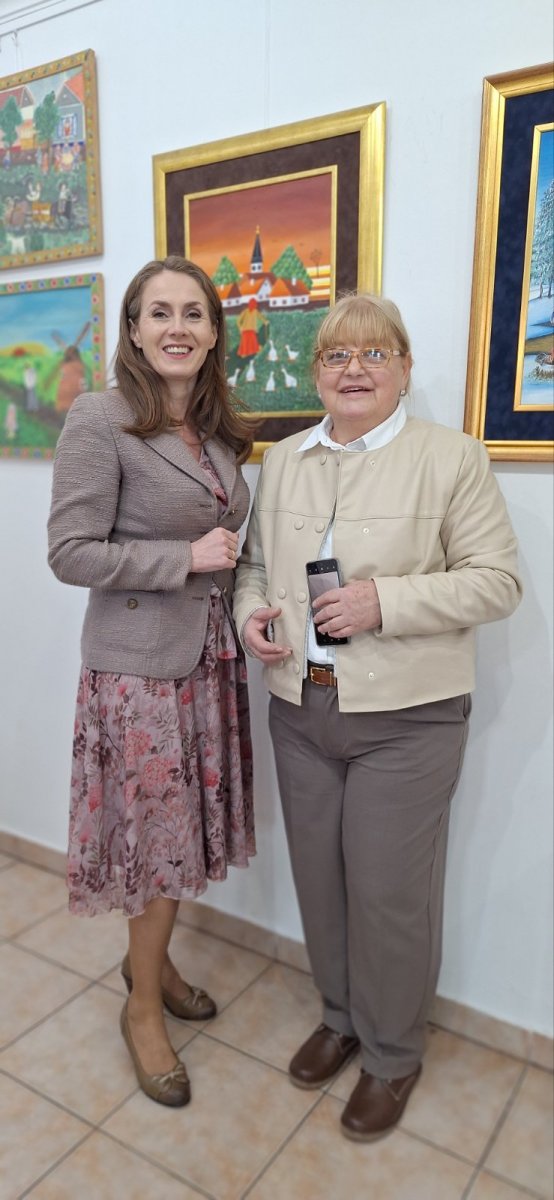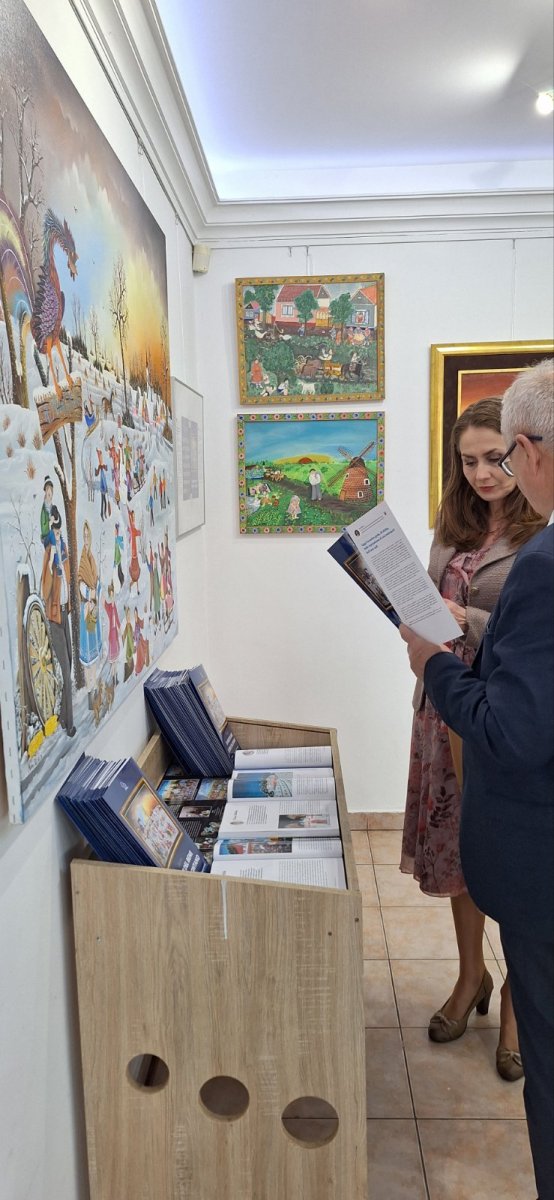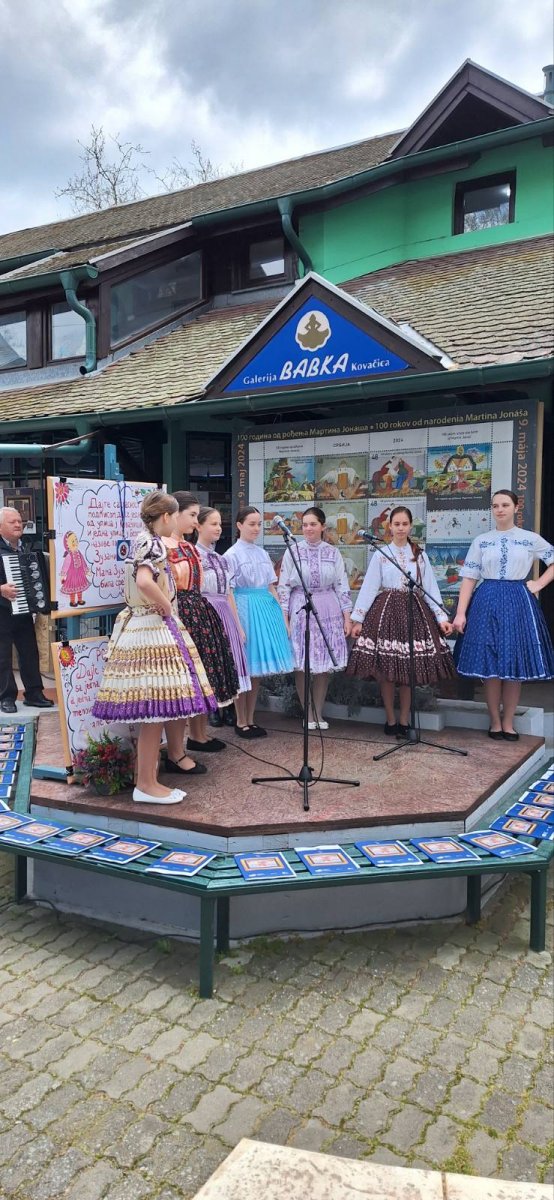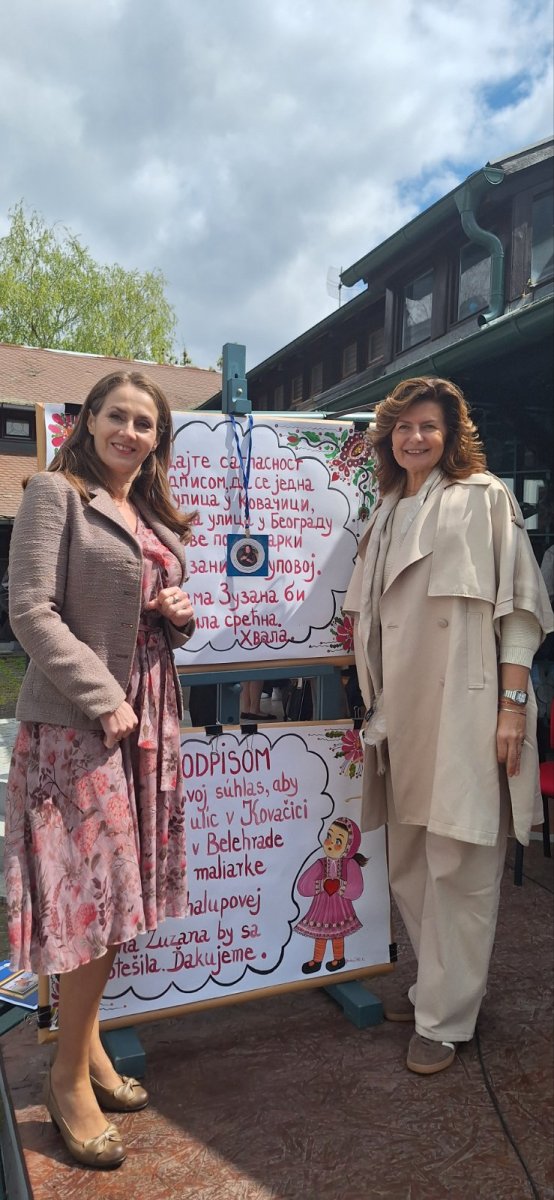The female painters from Kovačica have significantly shaped naïve visual art, and their works represent a valuable testament to the richness of Serbia’s culture. The art we celebrate and share today has also shaped our worldview and helped preserve the priceless elements of culture and tradition from being forgotten, emphasized Brankica Janković, Commissioner for the Protection of Equality, at the opening of the exhibition “Women’s Artistic Signature of Kovačica Naïve Art – From Needle and Thread to UNESCO” at the Babka Gallery in Kovačica.
The contribution of women to Kovačica’s naïve painting is reflected not only in their techniques and motifs, but in the authentic way they portrayed their inner world and perception of reality through art. On their canvases, they conveyed personal experiences, as well as the history of their region, customs and traditions, “ordinary” scenes from life and daily routines—everything that has always been a meaningful part of their identity and something they never felt ashamed of.
It was a particular pleasure to support the initiative to name a street in Kovačica—and also one in Belgrade—after Zuzana Halupova, our great artist and one of the finest ambassadors of naïve painting, who left an indelible mark on the history of art, added Janković.
The Commissioner expressed her gratitude to the Babka Gallery and Foundation—its founder Pavel Babka, the director of the Kovačica Gallery of Naïve Art Ana Žolnaj Barca, the director of the Gallery-Cultural Center Padina Anička Elšek, as well as Zuzana Lenhart, president of the Independent Association of Descendants of Deceased Naïve Painters—for the invitation and inspiring conversation that honored the men and women who have made significant contributions to the rich cultural heritage of Serbia and the world.
